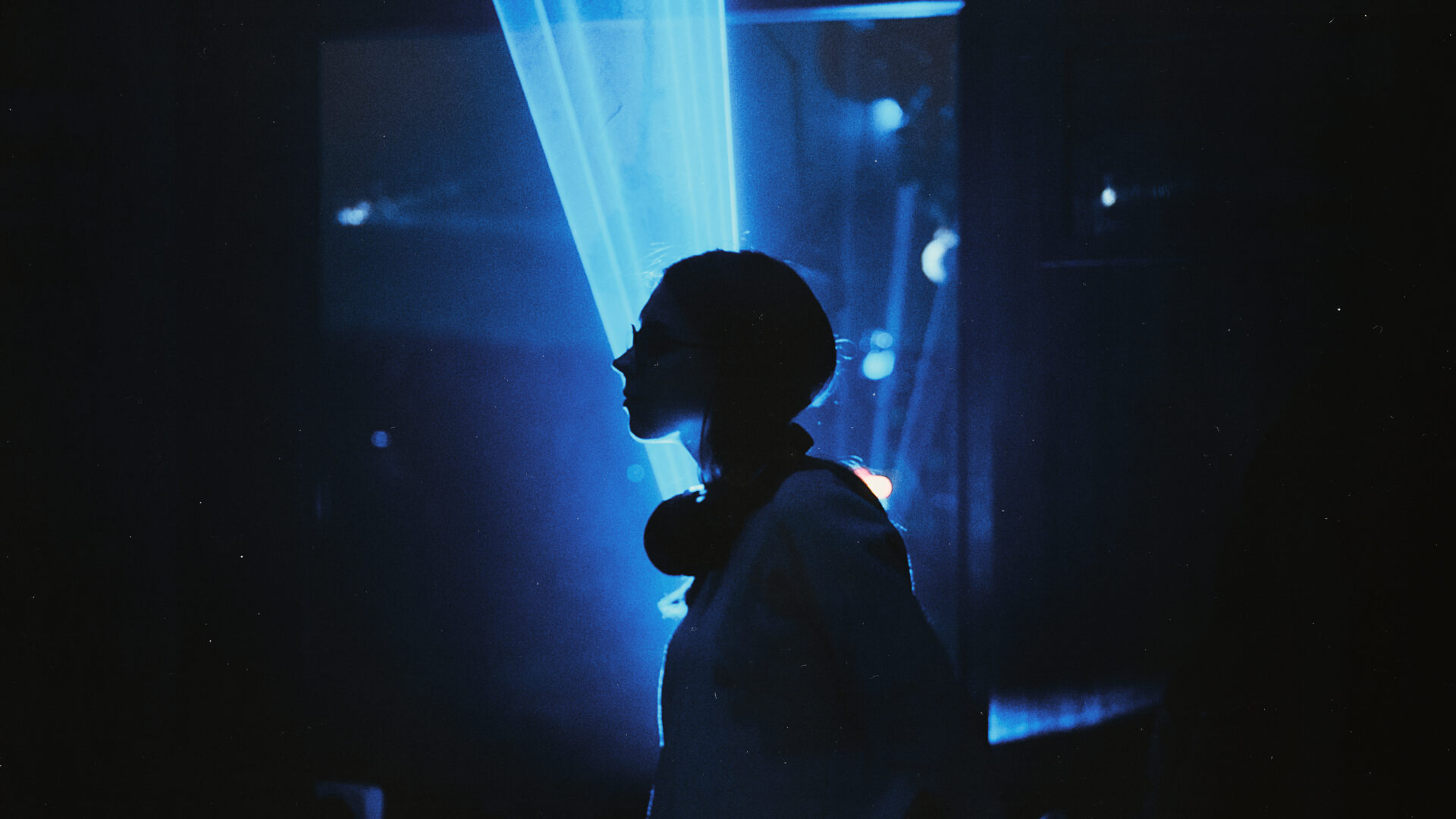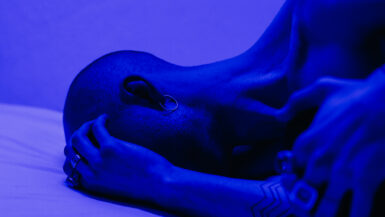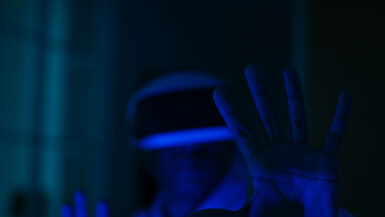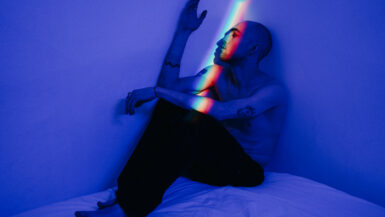In today’s fast-paced, technology-driven world, exposure to blue light has become an unavoidable part of our daily lives. This article delves into the science behind blue light, and its impact on both sleep quality and workplace productivity. By understanding the mechanisms through which blue light affects our circadian rhythm, we can adopt effective strategies to mitigate its negative consequences on our overall well-being. Join us as we explore the significance of blue light in our daily lives, and learn how to harness its potential while minimizing its detrimental effects on our sleep and performance at work.
Understanding Blue Light and Its Sources
Blue light, a high-energy visible (HEV) light, is a component of the natural sunlight spectrum. However, it is also emitted by artificial sources such as electronic devices and energy-efficient lighting. As our lives become increasingly intertwined with technology, it is crucial to understand the sources of blue light exposure and its impact on our sleep and productivity at work. In this section, we will explore the various sources of blue light and the reasons behind its growing presence in our lives.
The Sun: The Primary Source of Blue Light
The sun is the most significant source of blue light, which plays a vital role in regulating our circadian rhythm, also known as our internal body clock. Blue light exposure during daytime hours helps maintain alertness, improve mood, and enhance cognitive function. However, excessive exposure to blue light in the evening can disrupt our sleep patterns, as explained in this guide for seniors on blue light and sleep.
Electronic Devices: A Pervasive Source of Blue Light Exposure
With the widespread use of smartphones, tablets, computers, and televisions, blue light exposure from electronic screens has become an integral part of our daily lives. These devices emit varying levels of blue light, which can be particularly harmful when used at night or for prolonged periods during the day. As our reliance on technology continues to grow, it is essential to understand the consequences of excessive screen time on our sleep quality and productivity.
Energy-Efficient Lighting: A Double-Edged Sword
In recent years, energy-efficient lighting options such as compact fluorescent lamps (CFLs) and light-emitting diode (LED) bulbs have gained popularity due to their lower energy consumption and longer lifespan. While these lighting options are eco-friendly, they also emit higher levels of blue light compared to traditional incandescent bulbs. Consequently, switching to energy-saving lighting solutions can inadvertently increase our exposure to blue light, especially in indoor environments.
To summarize, understanding the various sources of blue light is crucial in order to make informed decisions regarding our exposure to it. By being aware of the potential impacts of blue light on our sleep and productivity, we can take necessary steps to minimize these effects and maintain a healthy balance in our lives.
Tips for Reducing Blue Light Exposure and Improving Sleep
As we’ve established, excessive exposure to blue light, particularly in the evening, can have detrimental effects on our sleep quality and, subsequently, on our performance at work. In this section, we will explore practical tips and strategies to minimize blue light exposure and promote restorative sleep, ultimately contributing to better productivity and overall well-being.
Establish a Screen-Free Evening Routine
One effective way to reduce blue light exposure is by creating a screen-free evening routine. This can include activities such as reading a physical book, engaging in relaxation exercises, or spending quality time with family and friends. By replacing screen time with calming and enjoyable activities, you can naturally reduce blue light exposure and signal your body that it’s time to wind down for a restful night’s sleep.
Adjust Device Settings and Use Blue Light Filters
Most electronic devices now come with built-in settings to reduce blue light emission. Enabling the “night shift” or “night mode” on your devices adjusts the color temperature of the screen, reducing blue light and promoting a more restful environment. Additionally, you can install blue light filtering software or apps such as f.lux or Twilight, which automatically adjust the screen’s color temperature based on the time of day.
Choose the Right Lighting for Your Home
As mentioned earlier, energy-efficient lighting solutions like CFLs and LEDs emit higher levels of blue light compared to incandescent bulbs. To minimize blue light exposure in your home, especially in the evening, consider using warmer, yellow-toned lighting options in areas where you spend most of your time before bedtime, such as the bedroom and living room. Alternatively, you can install dimmer switches to lower the intensity of the light, creating a more relaxing atmosphere.
Invest in Blue Light Blocking Glasses
Blue light blocking glasses are designed to filter out a portion of blue light emitted by electronic devices and artificial lighting. Wearing these glasses in the evening, particularly during screen time, can help reduce the impact of blue light on your sleep. While the effectiveness of blue light blocking glasses may vary, they can be a helpful tool when combined with other strategies to minimize blue light exposure.
Embrace Natural Light During the Day
Finally, it’s essential to expose yourself to natural sunlight during the day. This helps regulate your circadian rhythm, ensuring that you feel alert and energized during the daytime, and sleepy at night. Take breaks to step outside or work near a window, allowing your body to reap the benefits of natural sunlight and maintain a healthy sleep-wake cycle.
By implementing these tips and strategies, you can effectively reduce blue light exposure, improve your sleep quality, and boost your performance at work. Remember, a well-rested mind and body are key to achieving optimal productivity and maintaining overall well-being in today’s fast-paced world.
Effects of Blue Light Exposure on Sleep Quality
As we delve deeper into the impact of blue light on our sleep, it is crucial to understand the underlying mechanisms through which it influences our sleep quality. This subsection will explore various ways in which blue light exposure can disrupt our sleep, ultimately affecting our performance at work.
Melatonin Suppression: The Sleep Hormone Under Siege
Melatonin, a hormone produced by the pineal gland, plays a critical role in regulating our sleep-wake cycle. The production of melatonin increases in the evening, signaling our body that it is time to prepare for sleep. However, exposure to blue light in the evening can suppress melatonin production, leading to difficulties in falling asleep and maintaining restful sleep throughout the night.
Circadian Rhythm Disruption: Confusing Our Internal Clock
Our circadian rhythm, also known as our internal body clock, regulates various physiological processes, including our sleep-wake cycle. Blue light exposure during daytime hours is essential for maintaining a healthy circadian rhythm, as it helps keep us alert and awake. However, excessive exposure to blue light in the evening can disrupt this delicate balance, causing our internal clock to become misaligned with the natural day-night cycle. As a result, we may experience poor sleep quality, difficulty waking up in the morning, and daytime sleepiness.
Sleep Architecture Alteration: Disturbing the Structure of Sleep
Sleep is composed of different stages, including rapid eye movement (REM) sleep and non-REM sleep, which are essential for our cognitive function and overall well-being. Research suggests that blue light exposure, particularly before bedtime, can alter our sleep architecture by reducing the amount of REM sleep and prolonging the time it takes to enter deep, restorative sleep stages. This disruption can lead to reduced sleep quality, leaving us feeling less refreshed and alert upon waking.
Increased Risk of Sleep Disorders: A Vicious Cycle
Chronic exposure to blue light, especially during the evening, has been linked to an increased risk of developing sleep disorders such as insomnia and delayed sleep phase syndrome (DSPS). These sleep issues can further exacerbate the detrimental effects of blue light exposure, creating a vicious cycle that negatively impacts our sleep quality and overall health.
Impaired Performance at Work: The Consequence of Poor Sleep
The cumulative effects of blue light exposure on sleep quality can have a profound impact on our performance at work. Poor sleep quality can lead to reduced attention, impaired decision-making, and decreased productivity, ultimately affecting our professional success and well-being.
By recognizing the various ways blue light exposure can influence our sleep quality, we can take proactive measures to minimize its impact and promote healthier sleep patterns. This, in turn, will contribute to better performance at work and overall well-being, allowing us to thrive in today’s fast-paced and technology-driven world.
Blue Light’s Influence on Circadian Rhythm
The circadian rhythm, our internal body clock, is a crucial component of our overall well-being, as it regulates various physiological processes, including the sleep-wake cycle. In this subsection, we will delve into how blue light exposure can impact our circadian rhythm and, consequently, affect our sleep quality and performance at work.
How Blue Light Regulates Our Internal Clock
Blue light plays a pivotal role in synchronizing our circadian rhythm with the natural day-night cycle. During daytime hours, exposure to blue light helps promote alertness, cognitive function, and mood. This is mainly due to the activation of specialized cells in our eyes called intrinsically photosensitive retinal ganglion cells (ipRGCs), which relay light information to the suprachiasmatic nucleus (SCN) in our brain. The SCN, often referred to as the “master clock,” regulates the production of melatonin, the hormone responsible for inducing sleepiness.
The Disruption of Circadian Rhythm by Evening Blue Light Exposure
While daytime exposure to blue light is essential for a healthy circadian rhythm, excessive exposure during the evening can have detrimental effects. The presence of blue light in the evening can confuse our internal clock, as it mimics the natural light conditions of daytime. This can lead to delayed melatonin production, reducing our ability to fall asleep, and causing a misalignment between our sleep-wake cycle and the natural day-night cycle. As a result, our sleep quality suffers, and we may experience difficulties waking up in the morning and staying alert throughout the day.
The Consequences of Blue Light-Induced Circadian Rhythm Disruption on Work Performance
The impact of blue light-induced circadian rhythm disruption extends beyond just sleep quality. Studies have shown that misaligned circadian rhythms can lead to reduced cognitive performance, impaired decision-making, and increased susceptibility to fatigue-related errors. These factors can significantly affect our performance at work, potentially compromising our professional success and overall well-being.
Adopting Strategies to Minimize Evening Blue Light Exposure
Given the negative effects of evening blue light exposure on our circadian rhythm, it is crucial to adopt strategies that minimize its impact. Some effective approaches include creating a screen-free evening routine, using blue light filters on electronic devices, and choosing warmer lighting options for your home. By taking these measures, we can ensure that our circadian rhythm remains in sync with the natural day-night cycle, fostering better sleep quality and improved performance at work.
Overall, understanding the influence of blue light on our circadian rhythm is key to mitigating its negative effects on our sleep and work performance. By being mindful of our blue light exposure and implementing strategies to minimize its impact, we can support our internal clock and maintain our well-being in a technology-driven world.
Connection between Blue Light and Workplace Performance
The relationship between blue light exposure, sleep quality, and workplace performance is more significant than it might initially appear. In this subsection, we will delve into how excessive exposure to blue light can directly and indirectly impact our cognitive abilities, decision-making, and overall productivity at work. By understanding this connection, we can take necessary steps to reduce blue light exposure and harness its potential for enhanced performance in the workplace.
The Cognitive Toll of Excessive Blue Light Exposure
Research has shown that prolonged exposure to blue light, particularly in the evening, can lead to decreased cognitive performance. This is primarily due to its disruptive effects on our sleep quality, which in turn affects our ability to concentrate, process information, and solve complex problems. Moreover, excessive blue light exposure can also lead to increased mental fatigue, further impairing our cognitive abilities and hinder our performance at work.
Decision-Making Under the Influence of Blue Light
Our decision-making abilities are crucial for success in the workplace, as they enable us to navigate complex situations and make informed choices. However, excessive blue light exposure can negatively impact our decision-making skills by disrupting our sleep quality and circadian rhythm. Sleep-deprived individuals are more likely to make impulsive decisions, overlook critical details, and struggle with problem-solving, ultimately affecting their professional success and well-being.
Reduced Alertness and Increased Errors
Alertness is an essential component of workplace performance, as it allows us to stay focused and maintain accuracy in our tasks. Unfortunately, excessive blue light exposure can lead to reduced alertness due to its detrimental effects on our sleep quality. As a result, individuals exposed to high levels of blue light are more likely to experience lapses in attention, increased risk of errors, and a decline in overall productivity.
Workplace Burnout and Blue Light Exposure
Workplace burnout is a growing concern in today’s fast-paced work environment. One contributing factor to burnout is the quality of sleep we get, which can be negatively impacted by excessive exposure to blue light. Insufficient or poor-quality sleep can lead to emotional exhaustion, reduced job satisfaction, and decreased engagement with work tasks. By addressing the issue of blue light exposure, we can tackle one of the factors that contribute to workplace burnout and promote a healthier work-life balance.
Strategies to Optimize Blue Light Exposure for Better Workplace Performance
Understanding the connection between blue light exposure and workplace performance empowers us to implement strategies that maximize its potential benefits while minimizing its negative consequences. Some effective approaches include taking regular breaks from screens, using blue light filters on electronic devices, and adopting practices to improve sleep hygiene. Additionally, encouraging natural light exposure during the day can help maintain a healthy circadian rhythm, ultimately supporting better cognitive function and performance at work.
In essence, recognizing the connection between blue light, sleep quality, and workplace performance is crucial for maintaining our well-being and professional success in a technology-driven world. By adopting strategies that optimize blue light exposure, we can support improved cognitive function, better decision-making, and increased productivity, ultimately fostering a more balanced and fulfilling work life.





Leave a reply